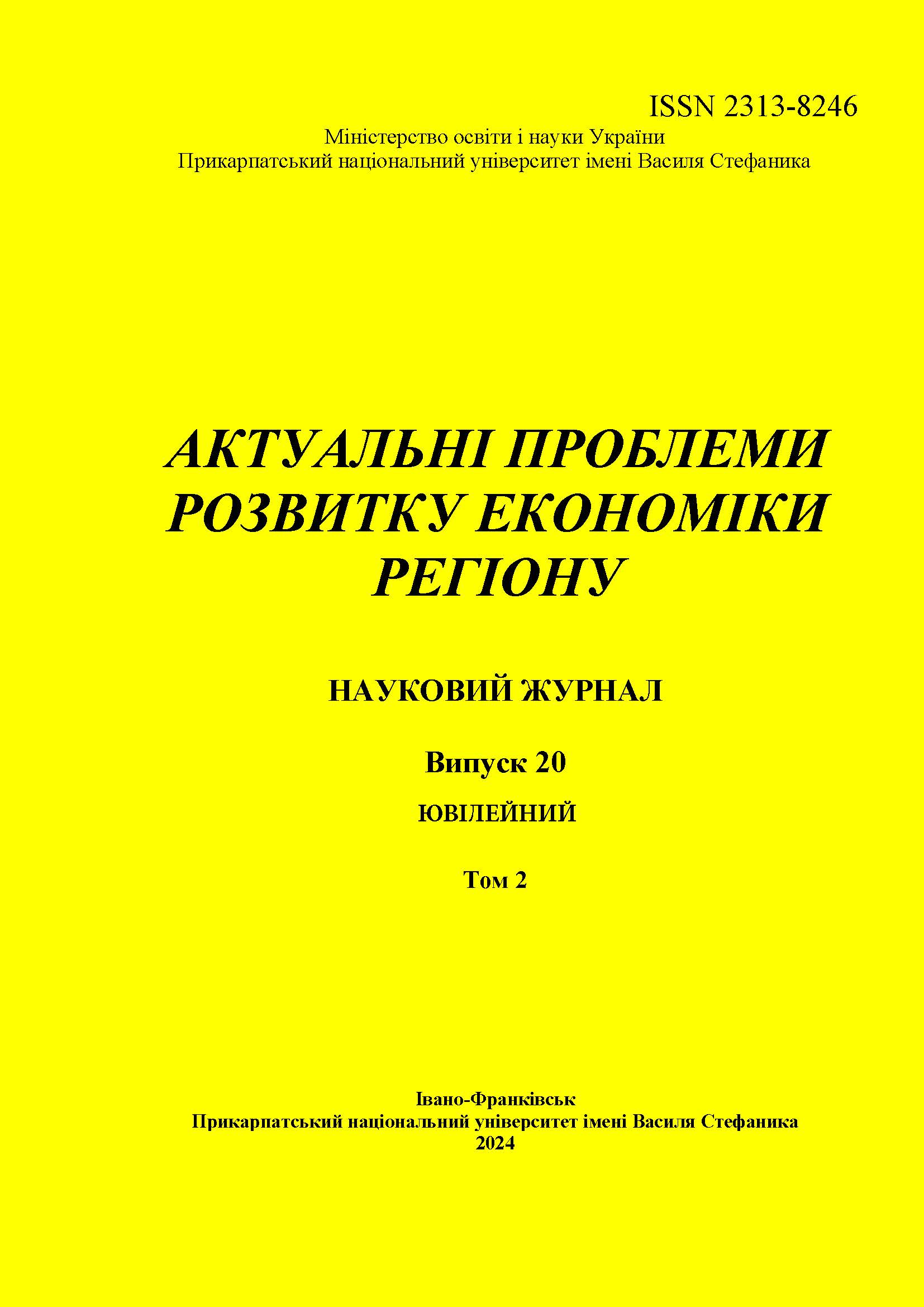РОЛЬ КАДРІВ У ЗАБЕЗПЕЧЕННІ КІБЕРБЕЗПЕКИ КРИТИЧНО ВАЖЛИВОЇ ІНФРАСТРУКТУРИ УКРАЇНИ
DOI:
https://doi.org/10.15330/apred.2.20.95-112Ключові слова:
кібербезпека, персонал, стратегії, навчання, культура безпеки, роль персоналуАнотація
Дослідження спрямоване на вивчення стратегій посилення ролі персоналу в кібербезпеці в організаційних умовах. Основна мета полягає в ідентифікації найбільш ефективних підходів для забезпечення активної участі персоналу в захисті від кіберзагроз та збереженні кібербезпеки в організаціях. Дослідження ґрунтується на аналізі літературних джерел, включаючи наукові статті, матеріали, звіти та практичні бізнес кейси. Застосовуються методи синтезу та аналізу для визначення стратегій та практичних рекомендацій для організацій. В ході дослідження виявлено ряд стратегій для підвищення ролі персоналу в кібербезпеці, включаючи комплексне навчання та підвищення обізнаності, створення культури безпеки, визначення чітких ролей та обов'язків, сприяння міжфункціональній співпраці та забезпечення визнання та заохочення. Ці результати мають значущість для практичного застосування в організаціях. Автор дослідження пропонує концептуальний алгоритм розуміння забезпечення кібербезпеки через активну участь персоналу в організаціях та розглядає стратегії, які можуть бути застосовані для підвищення ефективності кіберзахисту. Рекомендації та висновки дослідження мають практичне значення для організацій, що прагнуть зміцнити свій кіберзахист та максимізувати внутрішні ресурси для захисту від кіберзагроз.
Основні висновки дослідження підкреслюють важливість персоналу як критичного компонента стратегій кібербезпеки. Персонал служить першою лінією захисту від кіберзагроз, виступаючи в ролі "людського файрвола" для виявлення, запобігання та реагування на потенційні інциденти безпеки. Пропагуючи свідомість безпеки серед персоналу, організації можуть суттєво знизити ймовірність успішних кібер-атак та мінімізувати наслідки порушень безпеки. Дослідження також підкреслює необхідність комплексних програм навчання, постійної освіти та інформаційних кампаній для оснащення персоналу знаннями та навичками, необхідними для розпізнавання та зменшення кібер-ризиків. Крім того, дослідження наголошує на важливості чітких ролей і обов'язків, міжфункціональної співпраці та стимулювання кібербезпеки для формування культури свідомості безпеки та активної оборони.
Більше того, дослідження надає детальний аналіз прикладів з різних організацій, які успішно впровадили ініціативи з кібербезпеки. Ці приклади пропонують цінну інформацію про ефективні практики, включаючи створення команд реагування на інциденти (IRT), впровадження програм навчання з кібербезпеки та проактивні стратегії пом'якшення внутрішніх загроз. Досліджуючи ці реальні приклади, організації можуть отримати практичні поради щодо покращення своєї кібербезпеки та стійкості до розвиваючих кіберзагроз.
Дослідження підкреслює, що активна участь персоналу є вирішальною для ефективного впровадження та підтримки заходів кібербезпеки в організаціях. Інвестуючи в навчання персоналу, сприяючи формуванню культури свідомості безпеки та просуваючи співпрацю, організації можуть покращити свою здатність захищатися від кіберзагроз і забезпечити безпеку своєї критичної інфраструктури. Висновки та рекомендації цього дослідження мають на меті надати практичні поради та стратегії для організацій, що прагнуть зміцнити свою кібербезпеку та максимізувати свої внутрішні ресурси для ефективного захисту від кіберзагроз.
Посилання
Skrynkovskyy, R. M.,, & O. Ye. Malashko. “Structural and classification characteristics of information security.” Internauka. Seriia: Yurydychni nauky, no.7(29), 2020, pp. 25–32..
Malashko, O. Ye., Skrynkovskyy R. M. “Priority areas for improving information security in Ukraine.” Internauka. Seriia: Yurydychni nauky, no.6(28), 2020, pp. 13–19.
Bakalinska, O., and O. Bakalynskyi. “Legal support of cybersecurity in Ukraine.” Pidpryiemnytstvo, hospodarstvo i pravo, no.9, 2019, pp. 100–108, doi: 10.32849/2663-5313/2019.9.17.
General requirements for cyber security of critical infrastructure, 19.06.2019, No 518. Verkhovna Rada of Ukraine,/zakon.rada.gov.ua/laws/show/518-2019-п#n8. Accessed 12 April. 2024.
Tykhomyrov, O. O. Ensuring information security as a function of the modern state. Kyiv, Lira , 2014.
Military Security Strategy of Ukraine "Military Security - Comprehensive Defense", 25.03.2021, No 121/2021. Verkhovna Rada of Ukraine, zakon.rada.gov.ua/laws/show/121/2021#n2. Accessed 12 April. 2024.
The order of formation of the list of objects of critical information infrastructure, 09.10.2020, No 943. Verkhovna Rada of Ukraine, zakon.rada.gov.ua/laws/show/943-2020-п#Text. Accessed 12 April. 2024.
About information, 02.10.1992, No 2657- ХІI. Verkhovna Rada of Ukraine, zakon.rada.gov.ua/laws/show/2657-12#Text. Accessed 12 April. 2024.
About the National Informatization Program, 04.02.1998, No 74/98-BP. Verkhovna Rada of Ukraine,zakon.rada.gov.ua/laws/show/74/98-вр#Text. Accessed 12 April. 2024.
Information society development strategy in Ukraine, 15.03.2013, No 386-p. Verkhovna Rada of Ukraine, zakon.rada.gov.ua/laws/show/386-2013-%D1%80#Text. Accessed 12 April. 2024.
Biriukov, D. S., and S. I. Kondratov. Critical infrastructure protection: problems and prospects of implementation in Ukraine. Kyiv, NISD, 2012.
Hnatiuk, S. O., Sydorenko, V. M., and O. P. Duksenko. “Modern approaches to critical infrastructure objects detection and identification.” Bezpeka informatsii, no.21(3), 2015, pp. 269–275, doi: 10.18372/2225-5036.21.9690.
Hnatiuk, S. O., Riabyi, M. O., and V. M. Liadovska. “Critical Information Infrastructure Definition and Protection - Approach Analysis.” Zv’iazok, no.4, 2014, pp. 3–7.
On the basic principles of cybersecurity of Ukraine, 05.10.2017, No 2163-VIII. Verkhovna Rada of Ukraine, zakon.rada.gov.ua/laws/show/2163-19#Text. Accessed 12 April. 2024.
##submission.downloads##
Опубліковано
Як цитувати
Номер
Розділ
Ліцензія

Ця робота ліцензується відповідно до Creative Commons Attribution-NonCommercial-NoDerivatives 4.0 International License.
Автори, які публікуються у цьому журналі, погоджуються з наступними умовами:
- Автори залишають за собою право на авторство своєї роботи та передають журналу право першої публікації цієї роботи на умовах ліцензії Creative Commons Attribution License, котра дозволяє іншим особам вільно розповсюджувати опубліковану роботу з обов'язковим посиланням на авторів оригінальної роботи та першу публікацію роботи у цьому журналі.
- Автори мають право укладати самостійні додаткові угоди щодо неексклюзивного розповсюдження роботи у тому вигляді, в якому вона була опублікована цим журналом (наприклад, розміщувати роботу в електронному сховищі установи або публікувати у складі монографії), за умови збереження посилання на першу публікацію роботи у цьому журналі.
- Політика журналу дозволяє і заохочує розміщення авторами в мережі Інтернет (наприклад, у сховищах установ або на особистих веб-сайтах) рукопису роботи, як до подання цього рукопису до редакції, так і під час його редакційного опрацювання, оскільки це сприяє виникненню продуктивної наукової дискусії та позитивно позначається на оперативності та динаміці цитування опублікованої роботи (див. The Effect of Open Access).


